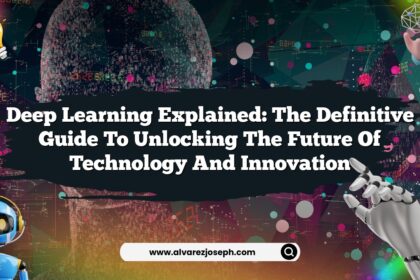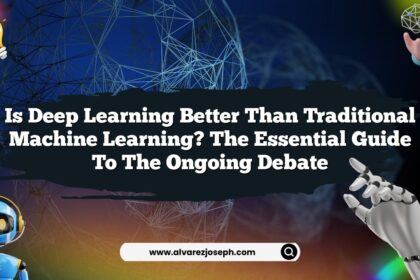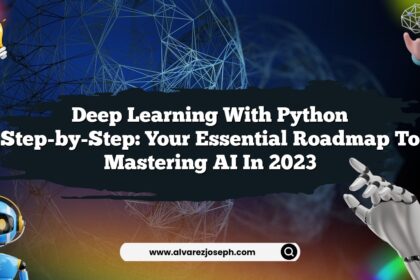Imagine a world where every decision made by artificial intelligence (AI) is not just a black box of algorithmic mystique, but a clear, reasoning machine that you can understand and trust. That’s where deep learning model interpretability comes into play. It’s the secret sauce transforming AI from abstract theory into something that you can actually explain to your grandma. This article is your essential guide to understanding the various interpretability techniques that unlock insights for smarter AI decisions. Trust me; you don’t want to miss this!
Understanding Deep Learning and Its Limitations
Deep learning has taken the tech world by storm, powering everything from self-driving cars to virtual assistants. But as marvelous as it is, deep learning models often operate like a magician’s hat—full of tricks but hard to decipher. Researchers have made significant strides in developing models that perform exceptionally well, but the opacity of these models can lead to mistrust and ethical dilemmas. Have you ever wondered why your recommendation engine suggested that weird rom-com? Interpreting how these systems arrive at decisions is crucial for accountability and transparency.
Why Interpretability Matters in AI
Imagine you’re on a first date, and your date orders something odd. You’d probably want to know why they chose it, right? Similarly, understanding the rationale behind AI decisions is essential in various fields such as healthcare, finance, and autonomous vehicles. Being able to explain why an AI made a specific decision can:
- Build trust in AI systems.
- Facilitate regulatory compliance.
- Enhance user experience with personalized insights.
But this isn’t where the story ends… What if I told you that different techniques exist to peel back the layers of complexity and reveal the inner workings of these models? Let’s dive into the fascinating world of interpretability techniques!
Common Deep Learning Interpretability Techniques
Understanding the various interpretability techniques is like learning the different styles of cooking; each method has its unique flavor and application. Here’s a list that outlines some of the most widely used techniques.
1. Feature Importance
Feature importance methods can be likened to the star players of your favorite sports team. They help identify which features (or inputs) are most influential in making predictions.
- Permutation Importance: This technique measures the change in model accuracy when the values of a specific feature are shuffled.
- SHAP Values (Shapley Additive Explanations): SHAP values provide a way to fairly distribute the "credit" for a prediction across features, based on cooperative game theory.
2. LIME (Local Interpretable Model-agnostic Explanations)
LIME is like a magnifying glass that lets you examine individual predictions closely. It explains model predictions by approximating the model locally, so you can understand why a specific decision was made for a particular instance. It’s incredibly useful when you’re looking for insights one decision at a time.
3. Saliency Maps
Saliency maps are like an artist’s brushstrokes that highlight the important areas of an image. They visualize which parts of an input image most influence the model’s predictions. This technique is particularly useful in convolutional neural networks (CNNs) for image classification tasks.
4. Grad-CAM (Gradient-weighted Class Activation Mapping)
Building on saliency maps, Grad-CAM provides a more intuitive understanding of where the model is "looking" when making decisions. It uses the gradients of the output with respect to the feature maps to produce a visual explanation for the predictions.
5. Counterfactual Explanations
Imagine you’re trying to convince a stubborn friend to change their mind. You’d likely say, “If I’d just done this differently, the outcome might have been different.” Counterfactual explanations work similarly by presenting hypothetical scenarios that could have led to different predictions, helping users understand the decision boundaries of the model.
6. Model Distillation
This technique simplifies complex models into more interpretable ones without losing much predictive power. Think of it as condensing a huge novel into a short story while retaining the core plot and characters.
Practical Applications of Interpretability Techniques
The magic happens when you apply these techniques in real-world situations. Let’s explore some practical applications where interpretability can drive smarter AI decisions.
Healthcare
In healthcare, interpretability can be a lifesaver—literally! For instance, when a model predicts a high likelihood of disease, understanding which factors contributed to that prediction is crucial for doctors. They need to know whether the model focused on relevant symptoms or just noise. This transparency can enhance patient trust and streamline treatment plans.
Finance
In financial sectors, interpretability helps mitigate risks associated with lending, trading, and investing. If a model denies a loan, a clear explanation of why that decision was made can empower applicants and assist in regulatory compliance. Imagine how much smoother loan applications would be if they came with a personalized breakdown of why you were approved or denied!
Autonomous Vehicles
When it comes to self-driving cars, you definitely want to know why the car decided to swerve. Understanding the decision-making process in critical scenarios can help engineers refine algorithms and improve safety measures, making our roads safer for everyone. What if your car could tell you, “I swerved because that squirrel looked suspicious”?
Challenges in Model Interpretability
Despite the numerous techniques available, the road to interpretability is not without bumps. Some challenges include:
- Complexity of Models: As models become more complex, explanations may also become convoluted, leading to confusion rather than clarity.
- Trade-off Between Accuracy and Interpretability: There’s often a trade-off between building highly accurate models and maintaining interpretability. A complex, high-performing model may become so opaque that no one understands it.
These challenges often leave us asking, “Is it worth it?” But don’t lose hope—there are ways to navigate these murky waters.
The Future of Deep Learning Interpretability
As AI continues to evolve, so too does the need for interpretability. Researchers are exploring avenues like:
- Interactive Visualizations: Future AI models may come equipped with intuitive dashboards that allow users to explore decision-making processes interactively.
- Standardization of Interpretability Metrics: The development of universal metrics to measure and compare interpretability techniques could provide a clearer framework for evaluation.
Imagine a future where you could not only trust AI but also understand it as deeply as you understand your morning coffee order. Exciting, isn’t it?
Quick Summary
- Deep learning models excel but often lack interpretability.
- Interpretability is essential for trust, accountability, and user experience.
- Common techniques include Feature Importance, LIME, Saliency Maps, and more.
- Practical applications span healthcare, finance, and autonomous vehicles.
- Challenges include model complexity and the accuracy-interpretability trade-off.
- Future developments may include interactive visualizations and standardized metrics.
Frequently Asked Questions
What is model interpretability in AI?
Model interpretability refers to the methods and techniques that allow humans to understand and explain how AI models make decisions.
Why is interpretability crucial in healthcare?
In healthcare, interpretability is vital for ensuring that medical professionals can trust AI-assisted decisions, ultimately affecting patient care and treatment plans.
What are SHAP values?
SHAP (Shapley Additive Explanations) values are a method for explaining the output of a machine learning model by distributing the prediction value among the input features based on their contribution.
Can interpretability techniques be applied to all types of models?
While many interpretability techniques are designed to be model-agnostic, some methods may work better for specific types of models, such as tree-based models or neural networks.
What are some challenges faced in achieving model interpretability?
The primary challenges include the complexity of models, a potential trade-off between accuracy and interpretability, and the lack of standardized metrics for evaluation.
How does the future look for model interpretability?
The future of interpretability in AI is promising, with ongoing research focused on developing interactive visualizations and standardized metrics to enhance understanding.
Exploring the world of deep learning interpretability techniques is not just an academic exercise; it’s a journey into making AI more understandable, trustworthy, and ultimately beneficial for everyone. So, how will you apply this newfound knowledge to navigate the exciting world of AI?












